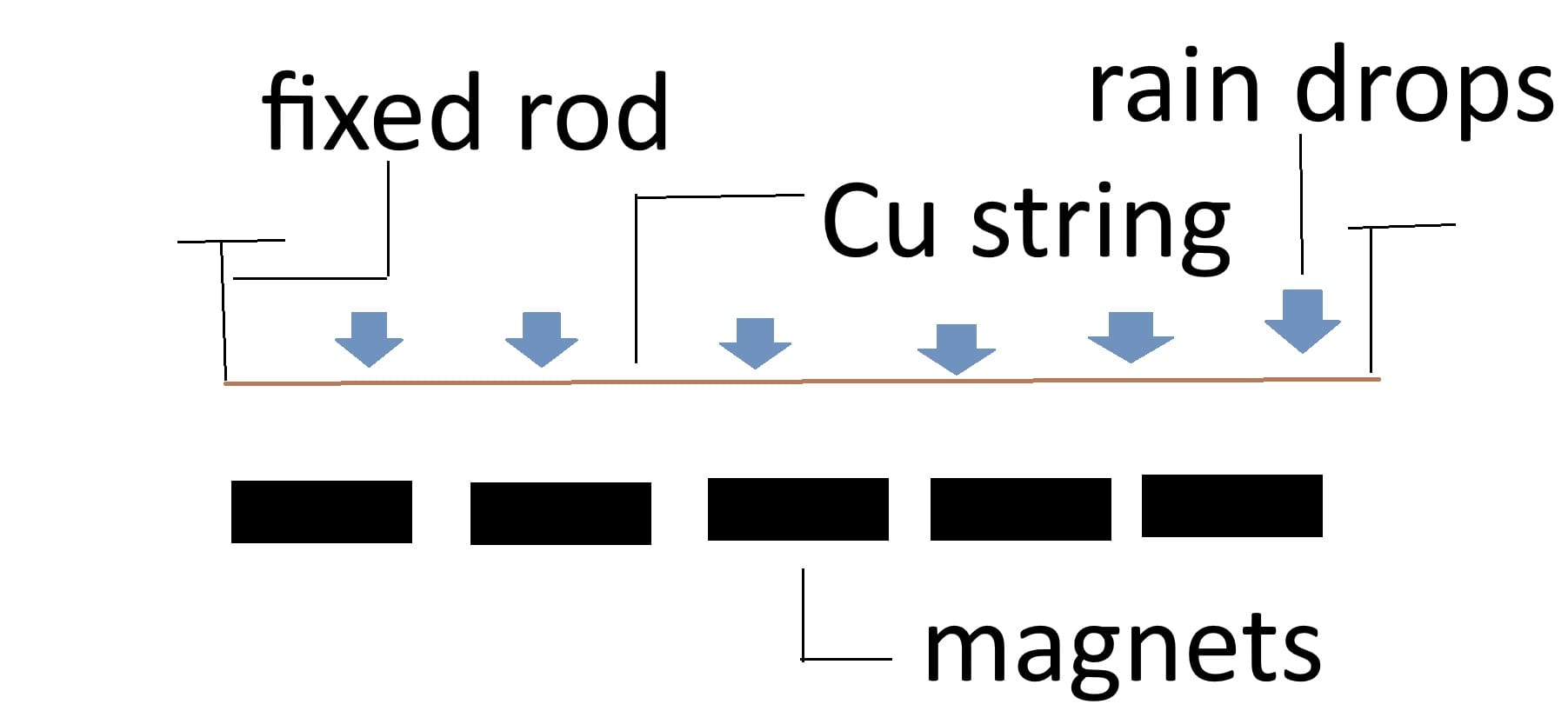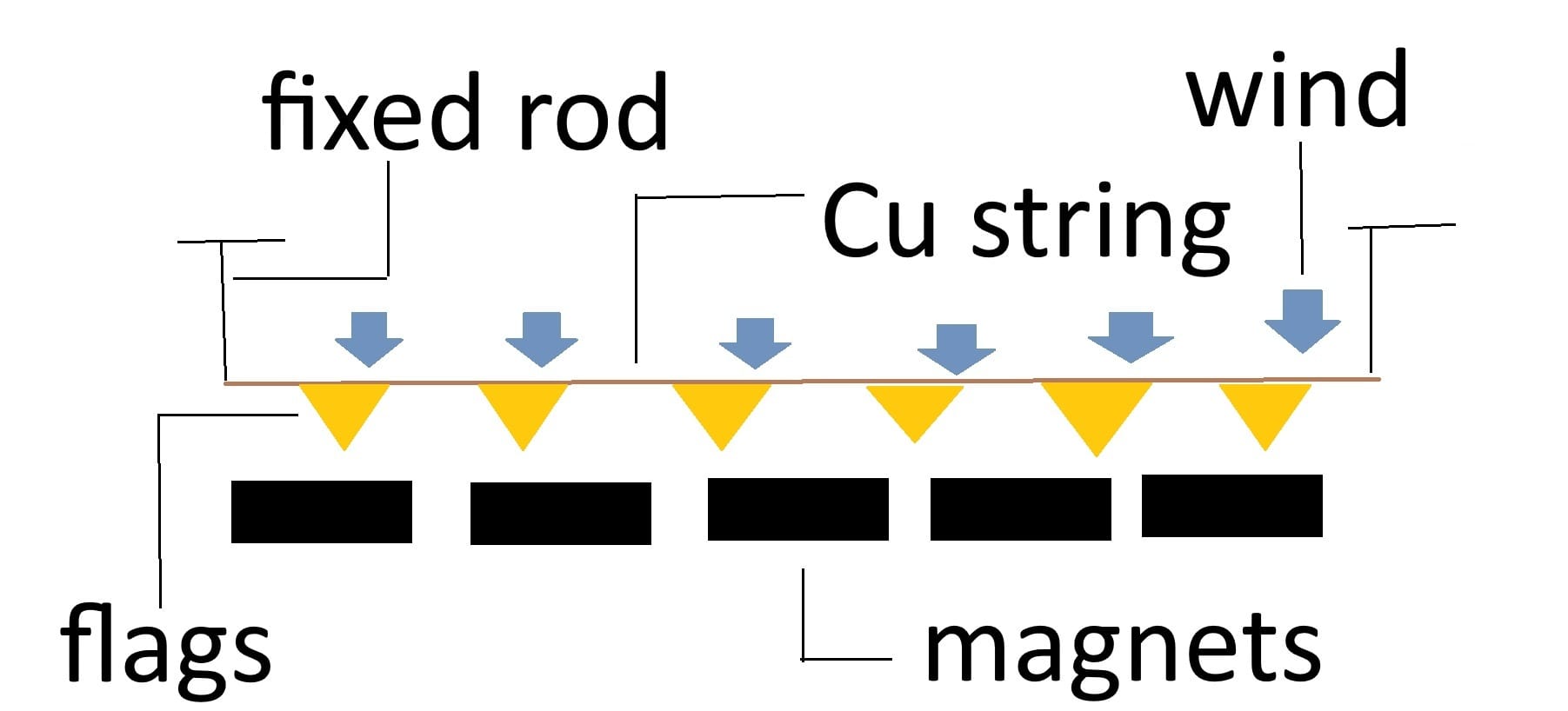Renewable energy sources are increasingly gaining traction as the world shifts towards more sustainable practices. One intriguing approach to harnessing natural elements for electricity generation involves the use of magnetic induction. In this article, we’ll explore two innovative scenarios where vibrating copper wire interacts with magnetic fields, spurred by rain and wind, to generate electrical energy.
Understanding Magnetic Induction
At the core of our exploration is the principle of magnetic induction. When a conductor, such as copper wire, moves through a magnetic field, an electric current is generated within the conductor. This fundamental principle, discovered by Michael Faraday in the 1830s, forms the basis of many electrical generation methods today. In our scenarios, we harness natural forces—rain and wind—to initiate the movement of copper wire within a magnetic field, thus generating electricity.
Scenario One: The Rain-Powered Copper String Generator
Imagine a long copper string suspended beneath a roof, designed specifically for rainfall accumulation. As raindrops fall on the string, they cause it to vibrate. This vibration occurs due to the impact of the droplets, which impart kinetic energy to the wire.
How It Works
- Rain Impact: When raindrops hit the copper string, they induce vibrations.
- Magnetic Interaction: The vibrating string sits within the magnetic field of strategically placed permanent magnets, set up nearby or along the wire’s length.
- Electricity Generation: The constant motion of the wire within the magnetic field generates an electric current through electromagnetic induction.
Advantages of this setup include its simplicity and the ability to generate electricity even in low rain conditions. Additionally, it can be easily integrated into existing rainwater collection systems, which adds functionality without requiring extensive modifications.

Scenario Two: The Wind-Powered Copper Wire System
Another innovative approach involves using wind to create vibrations in a long copper wire set up with attached flags. This clever design takes advantage of the wind’s natural force to initiate movement and, consequently, electricity generation.
How It Works
- Wind Interaction: As the wind blows, it catches the flags attached to the copper wire. The flags act like sails, driving the wire back and forth.
- Vibrational Motion: The energy from the wind causes oscillation in the wire.
- Magnetic Induction: Like scenario one, this vibrating wire operates within a magnetic field created by permanent magnets, generating electricity through the same electromagnetic principle.
This wind-powered system showcases versatility, as it can be implemented in various environments—urban rooftops, open fields, or any area subject to wind flow.

Combining Both Systems for Enhanced Sustainability
The beauty of these systems lies in their simplicity and the potential for integration. Imagine a hybrid setup that combines both rain and wind energy generation. For instance, a garden or park could have several of these copper vibrating systems, capturing both rainfall and wind energy, thus maximizing electricity generation.
Challenges and Considerations
While these systems are promising, there are challenges to overcome.
- Efficiency: The initial designs may produce limited amounts of electricity. Further research and engineering will be essential to enhance efficiency and ensure consistent electricity generation.
- Material Durability: The materials must be weather-resistant and durable, particularly in rain-prone or windy locations, to withstand the elements.
- Scalability: Developing scalable models that can be used in urban and rural settings alike is crucial for broader adoption.
As the world grapples with energy crises and seeks sustainable solutions, the inventive use of vibrating copper wire in magnetic fields presents an exciting frontier. By harnessing the natural forces of rain and wind, we can potentially generate clean electricity and pave the way for a greener, more sustainable future. Innovations like these remind us that sometimes the answers lie right above us—in the very elements that sustain life on Earth.